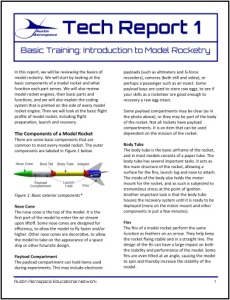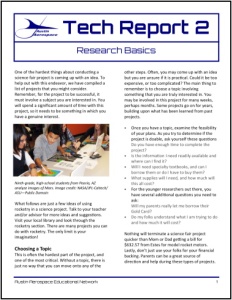Our Tech Reports are designed to bring you the information you need to accomplish a specific task. These reports are in Adobe Acrobat (pdf) format.
Tech Report 1
Intro to Model Rocketry
If you are new to model rocketry, this report will help get you started. It provides a basic introduction into model rocketry, provides descriptions on the various parts of a model rocket, how a black powder motor works and the meaning of the letters and numbers printed on the side.
Tech Report 2
Research Basics
If you have never done a research project (such as for a school science fair) this report will introduce you to all of the steps involved. It covers a variety of topics, from how to select a topic, doing background research, creating the report, and presenting your findings. This report can provide a roadmap to a successful project.
Tech Report 3
Single Station Tracking

“How high did my rocket go?” is almost certainly the first question asked after a rocket takes to the air. In this tech report we describe how to calculate altitude using a technique called “Single Station Elevation Only” tracking. We also describe how to create an altitude calculator using the LibreOffice Calc spreadsheet.
Tech Report 4
Two Station Tracking
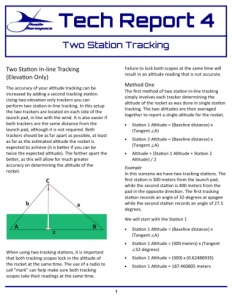
In Tech Report 3 we discussed how to determine the altitude of your rocket using a single tracking station. In this report we discuss how to increase the accuracy using two stations. We also describe how to add this calculator to the LibreOffice Calc spreadsheet.
Tech Report 5
Altimeter Adjustments

In Tech Reports 3 and 4 we looked at how to determine altitude using ground stations. Today, you can purchase an electronic altimeter that will report the altitude your rocket attained. However, they may provide incorrect readings as they do not account for the ambient air temperature. This report shows how to adjust the reported altitude based on current air temperature.
Tech Report 6
Using Spreadsheets: Single Station Tracking
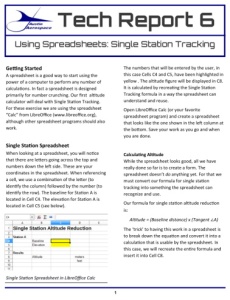 In Tech Report 3 we provided the formula for calculating just how high your rocket flew. This was done using a single station and recording the elevation. You then had to do the math to get your rocket’s altitude. In this Tech Report we show you how to create a spreadsheet that will do the math for you. In addition to calculating the altitude in meters, it will also calculate the altitude in feet.
In Tech Report 3 we provided the formula for calculating just how high your rocket flew. This was done using a single station and recording the elevation. You then had to do the math to get your rocket’s altitude. In this Tech Report we show you how to create a spreadsheet that will do the math for you. In addition to calculating the altitude in meters, it will also calculate the altitude in feet.
TR-6 Using Spreadsheets: Single Station Tracking
Tech Report 7
Getting Started with an Arduino
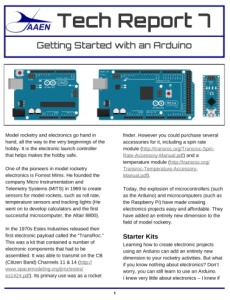 Tech Report 7 converts our “Getting Started with an Arduino” post into an Adobe Acrobat pdf format. This allows you to have a single document with all of the information in one concise format, including the links to various Thingiverse 3D printing files.
Tech Report 7 converts our “Getting Started with an Arduino” post into an Adobe Acrobat pdf format. This allows you to have a single document with all of the information in one concise format, including the links to various Thingiverse 3D printing files.
TR-7 Getting Started with an Arduino
Tech Report 8
Newton’s Laws of Motion
 Tech Report 8 discusses Newton’s three laws of motion. It is important to understand these laws as it relates to rocketry. All of our rockets are subject top these three laws. It also includes a couple of formulas including how to calculate acceleration and a “Newton”
Tech Report 8 discusses Newton’s three laws of motion. It is important to understand these laws as it relates to rocketry. All of our rockets are subject top these three laws. It also includes a couple of formulas including how to calculate acceleration and a “Newton”
Tech Report 9
Calculating Predicted Altitude
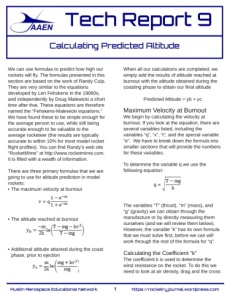 Have you ever wondered how high your rocket might go – before you fly it? Tech Report 9 takes you step-by-step through the process of calculating the predicted altitude. It includes all of the formulas needed and sample calculations performed on an Estes Goblin using a D12 rocket motor.
Have you ever wondered how high your rocket might go – before you fly it? Tech Report 9 takes you step-by-step through the process of calculating the predicted altitude. It includes all of the formulas needed and sample calculations performed on an Estes Goblin using a D12 rocket motor.
TR-9 Calculating Predicted Altitude
Tech Report 9s (Supplemental)
Calculating Predicted Altitude
 In this supplement to Tech Report 9 we take you step-by-step through the process of calculating the predicted altitude of the Farside-X 3-stage model rocket. All of the formulas from TR-9 are used and all of the math is displayed. At the end we compare our calculations with that calculated by the OpenRocket software and discuss why there are discrepancies between the two simulations
In this supplement to Tech Report 9 we take you step-by-step through the process of calculating the predicted altitude of the Farside-X 3-stage model rocket. All of the formulas from TR-9 are used and all of the math is displayed. At the end we compare our calculations with that calculated by the OpenRocket software and discuss why there are discrepancies between the two simulations
TR-9s Predicted Altitude Calculations for Farside-X
Tech Report 10
Getting Started in 3D Printing
 If you have thought about getting into 3D printing but weren’t sure what was involved or what you would need, Tech Report 10 “Getting Started in 3D Printing” will help answer a number of those questions. This report is based on the “Getting Started in 3D Printing” series here at the Journal. TR-10 puts all of that information together in a single document. It describes what 3D printing is, the materials used, tools and software you need and more. It also looks at how 3D printing can be incorporated into model rocketry.
If you have thought about getting into 3D printing but weren’t sure what was involved or what you would need, Tech Report 10 “Getting Started in 3D Printing” will help answer a number of those questions. This report is based on the “Getting Started in 3D Printing” series here at the Journal. TR-10 puts all of that information together in a single document. It describes what 3D printing is, the materials used, tools and software you need and more. It also looks at how 3D printing can be incorporated into model rocketry.
